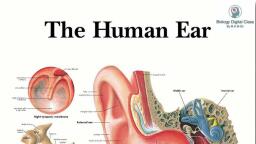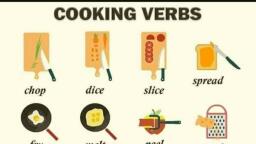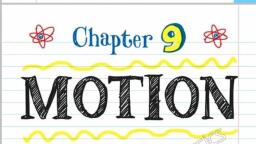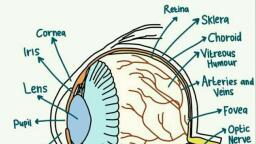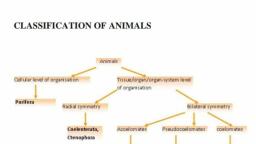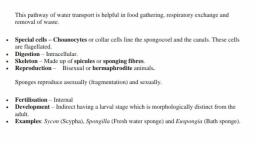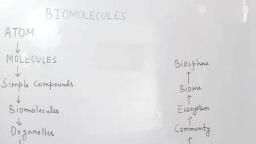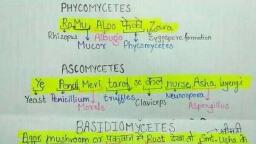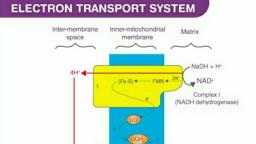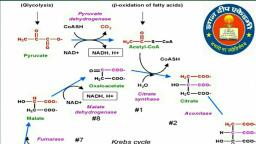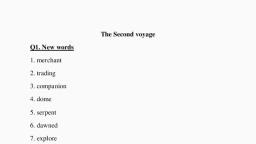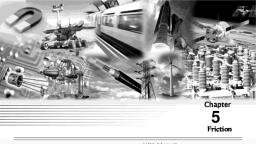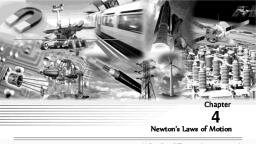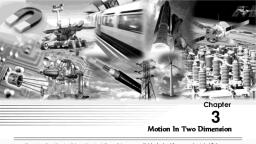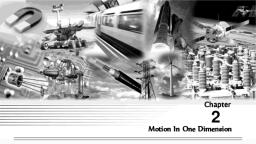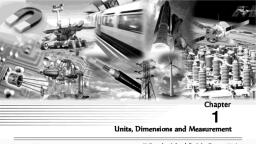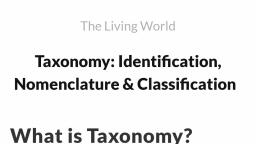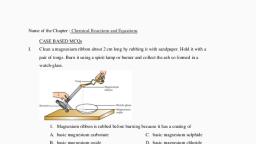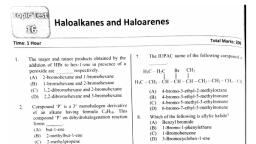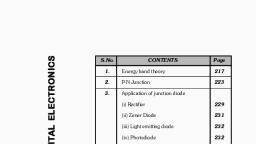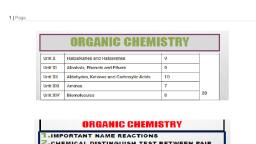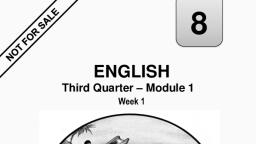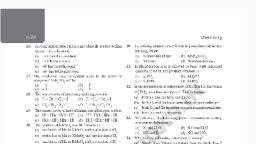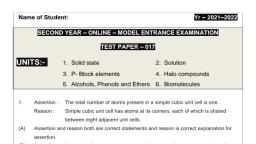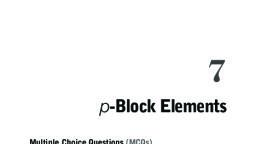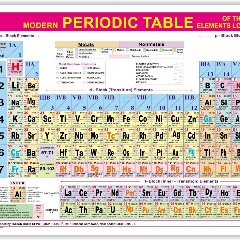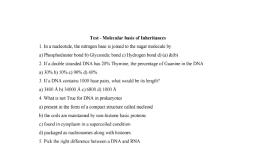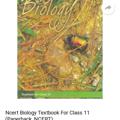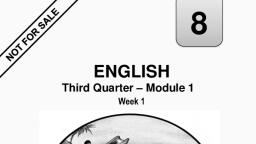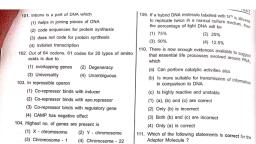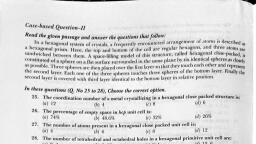Page 1 :
`, , CHEMISTRY, BOOKS - OBJECTIVE NCERT AT YOUR FINGERTIPS CHEMISTRY, CHEMICAL BONDING & MOLECULAR STRUCTURE, MCQs, , 1. The electronic configuration of four atoms are given in brackets :, `L(1s^(2)2s^(2)2p^(1))," "M(1s^(2)2s^(2)2p^(5)),`, `Q(1s^(2)2s^(2)2p^(6)3s^(1))," "R(1s^(2)2s^(2)2p^(2)),`, The element that would most readily form a diatomic molecule is, , A. Q, B. M, C. R, D. L, , Answer: B, Watch Video Solution
Page 2 :
2. Two elements P and Q combine to form a compound., If P has 2 and Q has 6 electrons in their outermosrt shell, what will be formula of the compound formed ?, , A. PQ, B. `P_(2)Q`, C. `P_(2)Q_(3)`, D. `PQ_(2)`, , Answer: A, Watch Video Solution, , 3. Number of electrons shared in the formation of nitrogen molecules is, , A. Three, B. Four, C. Eight, D. Six, , Answer: D, Watch Video Solution, , 4. The bond between two identical nonmetal atoms has a pair of electrons, , A. is shifted to one of the atoms
Page 3 :
B. is shared equally between them, C. undergoes addition reactions, D. have same spin., , Answer: B, Watch Video Solution, , 5. Which one of the following violates octet rule ?, , A. `NH_(3)`, B. `CH_(4)`, C. `CO_(2)`, D. NO, , Answer: D, Watch Video Solution, , 6. How is covalent bond formed ?, , A. transfer of electrons takes place, B. equal sharing of electrons between two atoms takes place, C. electrons are shared by one atom only, D. electrons are donated by one atom and shared by both atoms.
Page 4 :
Answer: B, Watch Video Solution, , 7. The compound containing coordinate bond is, , A. one electron from an atom is transferred to other, B. one electron each is lost from both the atoms, C. a pair of electrons is contributed by one atom and shared by both the atoms, D. a pair of electrons is transferred to the other atom., , Answer: C, Watch Video Solution, , 8. Which of the following compounds shows ionic, covalent and co-ordinate bonds as well ?, , A. (a) `C Cl_(4)`, B. (b) `CuSO_(4).5H_(2)O`, C. (c) `NaCl`, D. (d) `Mg(OH)_(2)`, , Answer: B, Watch Video Solution
Page 5 :
9. In the correct Lewis dot structure of `CO_(2)`, the total number of lone pairs are :, , A. `:overset(..)(O)::C::overset(..)(O):`, B. `:underset(..)overset(..)(O):overset(..)(C)::overset(..)(O):`, C. `:overset(..)(O)::C:underset(..)overset(..)(O):`, D. `:underset(..)overset(..)(O):C:underset(..)overset(..)(O):`, , Answer: A, Watch Video Solution, , 10. How many and what types of bonds are present in `NH_(4)^(+)`?, , A. Four covalent bonds, B. Three covalent bonds and one ionic bond, C. Four ionic bonds, D. Three covalent bonds and one coordinate bond, , Answer: D, Watch Video Solution
Page 6 :
11. What is the formal charge on carbon atom in the following two structures :, , A. `0, -2`, B. `0,0`, C. `+2,-2`, D. `+1,-1`, , Answer: B, Watch Video Solution, , 12. Which one of the following exceeds octet rule ?, , A. The incomplete octet of central atom, B. An odd number of electrons on central atom, C. Expanded octed of the central atom, D. All of these, , Answer: D
Page 7 :
Watch Video Solution, , 13. Two elements X and Y combine to form a compound XY. Under what conditions the bond formed, between them will be ionic ?, , A. If the difference in electronegativities of X and Y is 1.7., B. If the difference in electronegativities of X and Y is more than 1.7., C. If the difference in electronegativities of X and Y is less than 1.7., D. If both X and Y are highly electronegative., , Answer: B, Watch Video Solution, , 14. In which of the following species the bond is nondirectional ?, , A. `NCl_(3)`, B. `RbCl`, C. `BeCl_(2)`, D. `BCl_(3)`, , Answer: B, Watch Video Solution
Page 8 :
15. Can sodium chloride conduct eletricity in the solid state ? (A)Solids do not conduct electricity. (B)The, ions of NaCl become mobile only in molten state and are not free to move in solid state. (C)The crystalline, structure does not have ions. (D)When a bond is formed between ions they lose their charges., , A. Solids do not conduct electricity., B. The ions of NaCl become mobile only in molten state and are not free to move in solid state., C. The crystalline structure does not have ions., D. When a bond is formed between ions they lose their charges., , Answer: B, Watch Video Solution, , 16. Why carbon froms covalent compounds whereas lead forms ionic compounds ?, Answer: A, Watch Video Solution, , 17. The correct order of decreasing `C-O` bond length of (1) `CO,(II)CO_(3)^(2-) (III)CO_(2)` is ., , A. `CO gt CO_(2) gt CO_(3)^(2-)`, B. `CO_(3)^(2-) gt CO_(2) gt CO`, C. `CO_(2) gt CO gt CO_(3)^(2-)`, D. `CO_(2) gt CO_(3)^(2-) gt CO`, , Answer: B
Page 9 :
Watch Video Solution, , 18. Compare the Bond Lengths between Carbon Carbon single Bond,double bond and triple bond., , A. `(C - C) = (C = C) = (C -=C)`, B. `C -=C lt C = C lt C - C`, C. `C-C lt C = C lt C -= C`, D. `C = C lt C -= C lt C- C`, , Answer: B, Watch Video Solution, , 19. Which has the strongest bond?, , A. F - O, B. O - Cl, C. N - H, D. O - H, , Answer: D, Watch Video Solution
Page 10 :
20. Match the bond enthalpies given in column II with the molecules given in column I and mark the, appropriate choice., `{:(,"Column I",,"Column II "),((A),"Hydrogen "(H_(2)),(i),498.0 " kJ mol"^(-1)),((B),"Oxygen"(O_(2)),(ii),946.0", kJ mol"^(-1)),((C),"Nitrogen"(N_(2)),(iii),435.8 " kJ mol"^(-1)):}`, , A. `(A)to(i), (B)to(ii), (C) to (iii)`, B. `(A) to (iii), (B) to (ii), (C ) to (i) `, C. `(A) to (i), (B) to (iii), (C ) to (ii)`, D. `(A) to (iii), (B) to (i), (C ) to (ii)`, , Answer: D, Watch Video Solution, , 21. The given structures I, II and III of carbonate ion represent, , A. hybrid structures, B. isomeric structures, C. canonical structures, D. dipole structures., , Answer: C
Page 11 :
Watch Video Solution, , 22. Which of the following molecules does not show any resonating structures?, , A. `NH_(3)`, B. `CO_(3)^(2-)`, C. `O_(3)`, D. `SO_(3)`, , Answer: A, Watch Video Solution, , 23. The canonical or resonating structures of a molecule required to describe the structure of a molecule, follow which of the following rules ?, , A. The relative position of all atoms can differ., B. The same number of unpaired and paired electrons in all structures., C. The energy of each structure is different., D. Like charges are present on adjacent atoms., , Answer: B, Watch Video Solution
Page 13 :
A. the lone pair of nitrogen opposes the dipole moment of `NF_(3)` while it is added to the dipole monet, of `NH_(3)`, B. all the dipoles of `NF_(3)` are in same direction, C. all the dipoles of `NH_(3)` are in opposite direction, D. `NH_(3)` has a regular geometry while `NF_(3)` has irregular geometry which makes dipole moment of, `NH_(3)` more than `NF_(3)`., , Answer: A, Watch Video Solution, , 27. Diatomic molecule has a dipole moment of `1.2D` If its bond `1.0 Å` what fraction of an electronic charge, exists on each atom ? ., , A. `0.50`, B. `1.2 xx 10^(-10)`, C. `0.25`
Page 14 :
D. `1.2`, , Answer: C, Watch Video Solution, , 28. Which of the following are arranged in the decreasing order of dipole moment ?, , A. `CH_(3)Cl, CH_(3) Br, CH_(3) F`, B. `CH_(3)Cl, CH_(3)F, CH_(3) Br`, C. `CH_(3) Br, CH_(3) Cl, CH_(3) F`, D. `CH_(3) Br, CH_(3) F, CH_(3) Cl`, , Answer: B, Watch Video Solution, , 29. The dipoles moment of `NF_(3)` is less than `NH_(3)` because, , A. `4.90 xx 10^(-30) C m and 0.80 xx 10^(-30) C m`, B. `0.80 xx 10^(-30) C m and 4.90 xx 10^(-30) C m`, C. `4.90 xx 10^(-30) C m and 4.90 xx 10^(-30) C m`, D. `0.80 xx 10^(-30) C m and 0.80 xx 10^(-30) C m`, , Answer: A, Watch Video Solution
Page 16 :
32. According to VSEPR THEORY, , A. the shape of the molecule depends upon the bonded electron pairs, B. pair of electrons attract each other in valence shells, C. the pairs of electrons tend to occupy such positions that minimise repulsions, D. the pairs of electrons tend to occupy such positions that minimise distances from each other., , Answer: C, Watch Video Solution, , 33. In a bonded molecule, the order of repulsion between the bonded and non-bonded electrons is (A)lone, pair - lone pair > bond pair - bond pair > lone pair - bond pair (B)bond pair - bond pair > lone pair - lone pair, > lone pair - bond pair (C)lone pair - lone pair > lone pair - bond pair > bond pair - bond pair (D)bond pair bond pair > lone pair - bond pair > lone pair - lone p, , A. lone pair - lone pair `gt` bond pair - bond pair `gt` lone pair - bond pair, B. bond pair - bond pair `gt` lone pair - lone pair `gt` lone pair - bond pair, C. lone pair - lone pair `gt` lone pair - bond pair `gt` bond pair - bond pair, D. bond pair - bond pair `gt` lone pair - bond pair `gt` lone pair - lone pair., , Answer: C, Watch Video Solution
Page 18 :
D. Both are unstable since `SF_(4)` has tetrahedral shape., , Answer: B, Watch Video Solution, , 2. The most stable shape of `ClF_(3)` is shown by, , A. (i) only, B. (i) and (ii), C. (ii) only, D. (iii)only, , Answer: A, Watch Video Solution, , MCQs, , 1. Which of the following acts as a ligand but does not have any lone pair of electrons ?
Page 19 :
A. `NO_(2)`, B. `NH_(3)`, C. `BF_(3)`, D. `H_(2)O`, , Answer: C, Watch Video Solution, , 2. Few examples of the componds formed by chemical bonding are given below . Mark the incorrect, example., , A. A molecule with central atom devoid of octet - `BF_(3)`, B. A molecule with linear shape - `CO_(2)`, C. A non - polar covalent compound between two different atoms - `CH_(4)`, D. A molecule which is V- shaped with a bond angle `104.5^(@) - NH_(3)`, , Answer: D, Watch Video Solution, , 3. Which of the following statements is correct regarding the structure of `PCl_(5)` ?, , A. Three P - Cl bonds lie in one plane and two P - Cl bonds lie above and below the equatorial plane., B. Five P- Cl bonds lie is the same plane.
Page 20 :
C. The bond angle in all P - Cl bonds is `90^(@)`., D. The bond length of all P - Cl bonds is same ., , Answer: A, Watch Video Solution, , Vsepr Theory, , 1. Match the molecules given in column I with their shapes given in column II and mark the appropriate, choice.
Page 21 :
A. `(A) to (iv) , (B) to (ii), (C ) to (iii), (D) to (i)`, B. `(A) to (iv), (B) to (i), (C ) to (ii), (D) to (iii)`, C. `(A) to (iii), (B) to (i), (C ) to (ii), (D) to (iv)`, D. `(A) to (ii), (B) to (iii), (C ) to (i), (D) to (iv) `, , Answer: B, Watch Video Solution
Page 22 :
MCQs, , 1. Which of the following are iso-electronic as well as iso-structural ?, `NO_(3)^(-),CO_(3)^(2-),ClO_(3)^(-),SO_(3)`, , A. All have linear shape., B. All have trigonal planar shape., C. All have tetrahedral shape., D. All have trigonal pyramidal shape., , Answer: B, Watch Video Solution, , Vsepr Theory, , 1. Which molecule is depicted by the given ball and stick models ?
Page 23 :
A. `(i) BeCl_(2), (ii) CH_(4)`, B. `(i) BF_(3), (ii) PCl_(5)`, C. `BF_(4), (ii) CH_(4)`, D. `Be Cl_(2), (ii) PCl_(5)`, , Answer: B, Watch Video Solution, , 2. Given below is the table showing shapes of some molecules having lone pairs of electrons. Fill up the, blanks left in it., , A. `{:(2 " Square pyramidal",2" T-shaped ","Square planar ",H_(2)O_(2)):}`, B. `{:(4" T-shaped ",5 " Square planar ","Square pyramidal ",SO_(3)):}`, C. `{:(2" T-shaped ",1" Square pyramidal ","Square planar ",XeF_(4)):}`, D. `{:(3" Square planar ",2" T-shaped ","Square pyramidal ",BrCl_(3)):}`
Page 24 :
Answer: C, Watch Video Solution, , MCQs, , 1. Which of the following does not show octahedral geometry ?, , A. `SF_(6)`, B. `IF_(5)`, C. `SiF_(6)^(2-)`, D. `SF_(4)`, , Answer: D, Watch Video Solution, , 2. The `BCl_3` is a planar molecule whereas `NCl_3` is pyramidal because, , A. B-Cl bond is more polar than N - Cl bond, B. N-Cl bond is more covalent than B- Cl bond, C. nitrogen atom is smaller than boron atoms, D. `BCl_(3)` has no lone pair but `NCl_(3)` has a lone pair of electrons., , Answer: D, Watch Video Solution
Page 25 :
3. `CF_(4), SF_(4) and XeF_(4)` contain the following electronic structure on their central atoms. Which one, is correct option ?, , A. 1, 2 and 3 lone pairs of electrons respectively, B. 0,1 and 2 lone pairs of electrons respectively, C. 1,1 and 1 lone pairs of electrons respectively, D. No lone pairs of electrons on anly molecule, , Answer: B, Watch Video Solution, , 4. Which of the following statements is not true ?, , A. Ionic bonds are non- directional while covalent bonds are directional., B. Formation of `pi` - bond shortens the distance between the two concerned atoms., C. Ionic bond is possible between similar and dissimilar atoms., D. Linear overlapping of atomic p- orbitals leads to a sigma bond., , Answer: C, Watch Video Solution, , 5. Which of the following orbitals will not form sigma bond after overlapping ?
Page 26 :
A. s - orbital and s- orbital, B. s- orbital and `p_(z) -` orbital, C. `p_(z)`- orbital and `p_(z)-` orbital, D. `p_(x)`-orbital and `p_(y)`- orbital, , Answer: D, Watch Video Solution, , 6. How do `p_(x),p_(y)` and `p_(z)` atomic orbitals differ ?, , A. Two end to end and one sidewise overlap, B. Two sidewise and one end to end overlap, C. Three sidewise overlaps, D. Three end to end overlaps, , Answer: B, Watch Video Solution, , 7. Oxygen molecule is, , A. one axial s-s overlap and one p-p axial overlap, B. two p-p axial overlaps, C. two p-p sidewise overlaps
Page 27 :
D. one p-p axial and one p-p sidewise overlap., , Answer: D, Watch Video Solution, , 8. Which of the following is the most stable state when two atoms come closer to each other to form a, molecule?, , A. (i), when the bond is formed , the energy is minimum., B. (ii) , when the atoms touch each other, the energy is zero., C. (iii), when the atoms are isolated, the energy is minimum ., D. (ii), when the attractive forces are more than repulsive forces., , Answer: A, Watch Video Solution, , 9. The number of sigma `(sigma)` and pi `(pi)` bonds present in acetylene are _____ respectively., , A. Three sigma bonds and two pi bond, B. Three sigma bonds and one pi bond
Page 28 :
C. One sigma bond and two pi bonds, D. Three pi bonds and three sigma bonds, , Answer: C, Watch Video Solution, , 10. Propyne molecule contains, , A. 6 sigma and 2 pi bonds, B. 5 sigma bonds, C. 5 pi bonds and 1 sigma bond, D. 2 sigma and 3 pi bonds ., , Answer: A, Watch Video Solution, , 11. How many sigma and pi bonds are present in toluene ?, , A. `10 sigma and 3 pi " bonds" `, B. `12 sigma and 3 pi " bonds "`, C. ` 15 sigma and 3 pi " bonds "`, D. ` 6 sigma and 3 pi " bonds "`, , Answer: C
Page 29 :
Watch Video Solution, , 12. Which of the following statements is true about hybridisation ?, , A. The hybridised orbitals have different energies for each orbital., B. The number of hydrid orbitals is equal to the number of atomic orbitals that are hybridised., C. Hybrid orbitals form multiple bonds., D. The orbitals with different energies undergo hybridisation., , Answer: B, Watch Video Solution, , 13. In which of the following the central atom use `sp^(2)` hybrid orbitals in its bonding, , A. `CH_(4)`, B. `CO_(2)`, C. `BF_(3)`, D. `BeF_(2)`, , Answer: C, Watch Video Solution, , 14. carbon in carbon dioxide is
Page 31 :
C. two orbitals with linear orientation, D. two orbitals with perpendicular orientation., , Answer: A, Watch Video Solution, , 17. Among the following molecules : `SO_(2),SF_(4) ,CIF_(3) ,BrF_(5)` , and `XeF_(4)` , which of the, following shapes does not describe any of the molecules mentioned ?, , A. Bent, B. Trigonal Bipyramidal, C. See-Saw, D. T-Shape, , Answer: D, Watch Video Solution, , 18. Which of the following involves `dsp^(2)`-hybridisation and are square planar ?, , A. `SF_(6)`, B. `BrF_(5)`, C. `PCl_(5)`, D. `[Ni(CN)_(4)]^(2-)`
Page 34 :
B. `sp lt sp^(2) lt sp^(3)`, C. `sp^(2) lt sp lt sp^(3)`, D. `sp^(2) lt sp^(3) lt sp`, , Answer: B, Watch Video Solution, , 24. Match the column I with column II and mark the appropriate choice., `{:(,"Column I",,"Column II"),((A) ,C_(2)H_(2),(i),sp^(3)d^(2) " hybridisation"),((B),SF_(6),(ii),sp^(3)d^(3)", hybridisation"),((C ),SO_(2),(iii),sp " hybridisation"),((D),IF_(7),(iv),sp^(2)" hybridisation"):}`, , A. `(A) to (i), (B) to (iii), (C ) to (ii), (D) to (iv)`, B. `(A) to (iii), (B) to (i), (C ) to (iv), (D) to (ii)`, C. `(A) to (ii), (B) to (iii), (C ) to (i), (D) to (iv) `, D. `(A) to (iv), (B) to (i), (C ) to (iii), (D) to (ii)`, , Answer: B, Watch Video Solution, , 25. In formation of ethene, the bond formation between s and p- orbitals takes place in the following manner., , A. `sp^(2)` hybridised orbitals form sigma bond while the unhybridised `(p_(x) or p_(y))` overlaps, sidewise to form `pi `- bond.
Page 35 :
B. `sp^(2)` hybridised orbitals form `pi`- bond while the unhybridised `(p_(z))` overlaps to form `sigma`bond., C. `sp^(2)` hybridised orbitals overlap with s- orbitals of H atoms while unhybridised orbitals form C - C, bond., D. `sp^(2)` hybridised orbitals form sigma bonds with H atoms while unhybridised orbitals form `sigma`, bonds between C atoms., , Answer: A, Watch Video Solution, , 26. The ground state electronic configuration of S is `3s^(2) 3 p^(4)` . How does it form the compound, `SF_(6)` ?, , A. Due to octahedral shape of S atoms, B. Due to presence of vacant 3d- orbitals which provide 6 unpaired electrons in excited state, C. Due to `sp^(3)` hybridisation of S atom which provides 6 electrons to 6 F atoms, D. Due to presence of 3 sigma and 3 pi bonds between S and F, , Answer: B, Watch Video Solution, , 27. Which of the following statements is not true regarding molecular orbital theory?
Page 36 :
A. The atomic orbitals of comparable energies combine to form molecular orbitals., B. An atomic orbital is monocentric while a molecular orbital is polycentric., C. Bonding molecular orbital has higher energy than antibonding molecular orbital., D. Molecular orbitals like atomic orbitals obey Aufbau principle for filling of electrons., , Answer: C, Watch Video Solution, , 28. Which of the following representation of wave functions of molecular orbitals and atomic orbitals are not, correct ?, , A. `Psi_(MO)=Psi_(A) pm Psi_(B)`, B. `sigma = Psi_(A) +Psi_(B)`, C. `sigma^(***)= Psi_(A) - Psi_(B)`, D. `Psi_(MO) = Psi_(A) xxPsi_(B)`, , Answer: D, Watch Video Solution, , 29. 2s and 2p- atomic orbitals combine to give how many molecular orbitals ?, , A. 2, B. 4
Page 37 :
C. 8, D. 6, , Answer: C, Watch Video Solution, , 30. The conditions for the combination of atomic orbitals to form molecular orbitals are stated below., Mark the incorrect condition mentioned here., , A. The combining atomic orbitals must have nearly same energy., B. The combining atomic orbitals must overlap to maximum extent., C. Combining atomic orbitals must have same symmetry about the molecular axis., D. Pi `(pi)` molecular orbitals are symmetrical around the bond axis., , Answer: D, Watch Video Solution, , 31. The electronic configuration of carbon is `1s^(2) 2s^(2) 2p^(2)`., There are 12 electrons in `C_(2)` . The correct electronic configuration of `C_(2)` molecule is, , A. `(sigma1s^(2))(sigma^(**)1s^(2))(sigma2s^(2))(sigma^(**)2s^(2))(sigma2p_(z)^(2))(pi2p_(x)^(2))`, B. `(sigma1s^(2))(sigma^(**)1s^(2))(sigma2s^(2))(sigma^(**)2s^(2))(pi2p_(x)^(2)=pi2p_(y)^(2))`
Page 38 :
C. `(sigma1s^(2))(sigma^(**)1s^(2))(sigma2s^(2))(sigma^(**)2s^(2))(sigma2p_(z)^(2)), (pi2p_(x)^(1)=pi2p_(y)^(1))`, D. `(sigma1s^(2))(sigma^(**)1s^(2))(sigma2s^(2))(sigma^(**)2s^(2))(pi2p_(x)^(2)=pi2p_(y)^(1))`, , Answer: B, Watch Video Solution, , 32. Comprehension given below is followed by some multiple choice question, Each question has one, correct options. Choose the correct option., Molecular orbitals are formed by the overlap of atomic orbitals. Two atomic orbitals combine to form two, molecular orbitals called bonding molecular orbital (BMO) and anti-bonding molecular orbital (ABMO)., Energy of anti-bonding orbital is raised above the parent atomic orbitals that have combined and hte energy, of the bonding orbital is lowered than the parent atomic orbitals., energies of various molecular orbitals for elements hydrogen to nitrogen increase in the order, `sigma1s lt sigma^(star)1s lt sigma^(star)2s lt ((pi2p_(x))=(pi2p_(y))) lt sigma2p_(z) lt (pi^(star)2p_(x) =, pi^(star)2p_(y)) lt sigma^(star)2p_(z)` and For oxygen and fluorine order of enregy of molecules orbitals is, given below., `sigma1s lt sigma^(star)1s lt sigma2s lt sigma^(star)2s lt sigmap_(z) lt (pi2p_(x) ~~ pi2p_(y)) lt, (pi^(star)2p_(x)~~ pi^(star)2py) lt sigma^(star)2p_(z)`, Different atomic orbitalsof one atom combine with those atoms orbitals of the second atom which have, comparable energies and proper orientation., Further, if the overlapping is head on, the molecular orbital is called sigma, `sigma` andif the overlap is, lateral, the molecular orbital is called pi, `pi`. The molecular orbitals are filled with electrons according to the, same rules as followed for filling of atomic orbitals.
Page 39 :
However, the order for filling is not the same for all molecules or their ions. Bond order is one of the most, important parameters to compare the strength of bonds., 67) Which of the following pair is expected to have the same bond order?, , A. `C_(2)`, B. `B_(2)`, C. `O_(2)`, D. `Be_(2)`, , Answer: C, Watch Video Solution, , 33. Which of the following species have one unpaired electron each, , A. `N_(2)`, B. `F_(2)`, C. `O_(2)^(-)`, D. `O_(2)^(2-)`, , Answer: C, Watch Video Solution, , 34. The correct stability order for `N_2` and its given ions is :
Page 40 :
A. `N_(2) gt N_(2)^(+) = N_(2)^(-) gt N_(2)^(2-)`, B. `N_(2)^(+) gt N_(2)^(-) gt N_(2) gt N_(2)^(2-)`, C. `N_(2)^(-)gt N_(2)^(+) gt N_(2) gt N_(2)^(2-)`, D. `N_(2)^(2-) gt N_(2)^(-) = N_(2)^(+) gt N_(2)`, , Answer: A, Watch Video Solution, , 35. What will be the bond order of the species with electronic configuration `1s^(2) 2s^(2) 2p^(5)`?, , A. One, B. Two, C. Three, D. Zero, , Answer: A, Watch Video Solution, , 36. Which of the following bond order is indication of existence of a molecule ?, , A. Zero bond order, B. Negative bond order, C. Positive bond order
Page 41 :
D. All of these., , Answer: C, Watch Video Solution, , 37. Which of the following pairs have identical bond order?, , A. `F_(2) and O_(2)^(2-)`, B. `N_(2) and CO_(2)`, C. `O_(2) and O_(2)^(-)`, D. `N_(2) and N_(2)^(+)`, , Answer: A, Watch Video Solution, , 38. Respective Bond Order for the following `N_(2),N_(2)^(+),N_(2)^(-)`, , A. `2.5, 2.5 and 3` respectively, B. `2,2.5 and 3` respectively, C. `3,2.5 and 3` respectively, D. `2.5,2.5 and 2.5` respectively., , Answer: A, Watch Video Solution
Page 42 :
39. According to molecular orbital theory, which of the following will not be a viable molecule?, , A. `H_(2)^(+)`, B. `Be_(2)`, C. `B_(2)`, D. `C_(2)`, , Answer: B, Watch Video Solution, , 40. Which of the following facts regarding bond order is not valid ?, , A. Bond order is given by the number of bonds between the two atoms in a molecule., B. With increase in bond order, bond enthalpy of the molecule decreases., C. Isoelectronic molecules and ions have identical bond orders., D. With increase in bond order, bond length decrease., , Answer: B, Watch Video Solution, , 41. Which of the following formulae does not show the correct relationship ?
Page 43 :
A. `B.O.=1/2(N_(b)-N_(a))`, B. `B.O.propto1/("Bond length")`, C. `B.O.propto1/"Bond dissociation energy"`, D. `N_(b) gt N_(a), B.O. = + ve`, , Answer: C, Watch Video Solution, , 42. Fill in the blanks with appropriate choice., Bond ordr of `N_(2)^(+) is ul(" "P)`while that of `N_(2) is ul(" "Q)`., Bond order of `O_(2)^(+) is ul(" "R)` while that of `O_(2) is ul(" "S)`., N - N bond distance `ul(" "T)` when `N_(2)` changes to `N_(2)^(+) ` and when `O_(2)` changes to, `O_(2)^(+)` , the O - O bond distance `ul(" "U)`., , A. `{:(P,Q,R,S," "T," "U),(2,2.5,2.5,1,"increases","decreases"):}`, B. `{:(P,Q,R,S," "T," "U),(2.5,3,2,1.5,"decreases","increases"):}`, C. `{:(P,Q,R,S," "T," "U),(3,2,1.5,1,"increases","decreases"):}`, D. `{:(P,Q,R,S," "T," "U),(2.5,3,2.5,2,"increases","decreases"):}`, , Answer: D, Watch Video Solution, , 43. Which of the following relationships is true?
Page 44 :
A. Bond dissociation energy of `O_(2) and O_(2)^(-)` are same., B. Bond dissociation energy of `O_(2)^(+)` is higher than `O_(2)`,, C. Bond dissociation energy of `O_(2)^(-) and O_(2)^(2-)` are same., D. Bond dissociation energy of `O_(2)^(2-) ` is higher than `O_(2)^(-)`., , Answer: B, Watch Video Solution, , 44. Paramagnetism is shown by the molecules which have, , A. paired electrons, B. unpaired electrons, C. lone pair of electrons, D. bond order more than one., , Answer: B, Watch Video Solution, , 45. Which of the following species is paramagnetic in nature ?, , A. `H_(2)`, B. `Li_(2)`, C. `B_(2)`
Page 45 :
D. `N_(2)`, , Answer: C, Watch Video Solution, , 46. How many orbitals are singly occupied in `O_(2)` molecule ?, , A. 2, B. 1, C. 3, D. 4, , Answer: A, Watch Video Solution, , 47. Oxygen molecule is paramagnetic because, , A. no. of bonding electrons `gt` no. of antibonding electrons, B. no. of bonding electrons `lt` no. of antibonding electrons, C. no. of bonding electrons = no. of antibonding electrons, D. presence of unpaired electrons in molecular orbitals., , Answer: D, Watch Video Solution
Page 46 :
48. Oxygen molecule is paramagnetic in nature . What is the paramagnetic content in terms of magnetic, moment is `O_(2)^(-)` ? (a) 1.732 (b) 3 (c) 1.5 (d) 2.5, , A. `1.732`, B. 3, C. `1.5`, D. `2.5`, , Answer: A, Watch Video Solution, , 49. Which one shows maximum hydrogen bonding ?, , A. HF, B. `H_(2)O`, C. `NH_(3)`, D. `CH_(3)OH`, , Answer: A, Watch Video Solution
Page 47 :
50. Hydrogen bond is formed between hydrogen atoms and highly electronegative elements It is of two, types -intermolecular and intramolecualar It is a weaker bond than ionic, covalent and metallic bonds, Which is correct stament ? ., , A. displacement of electrons towards more electronegative atom resulting in fractional positive charge on, hydrogen, B. displacement of electrons towards hydrogen atom resulting in a polar molecule, C. formation of a bond between hydrogen atoms of one molecule and the other, D. existence of an attractive force which binds hydrogen atoms together., , Answer: A, Watch Video Solution, , 51. Which of the following statements is true of hydrogen atom ? (a)Cl and N have comparable, electronegativities yet there is no H- bonding in HCl because size of Cl is large. (b) Intermolecular Hbonding results in decrease in m.p. and b.p. (c) Ice has maximum density at `0^(@)C` due to H- bonding., (d) `KHCl_(2)(HCl_(2)^(-))` exists but `KHF_(2)(HF_(2)^(-))` does not exist due to lack of H- bonding in HCl., , A. Cl and N have comparable electronegativities yet there is no H- bonding in HCl because size of Cl is, large., B. Intermolecular H- bonding results in decrease in m.p. and b.p., C. Ice has maximum density at `0^(@)C` due to H- bonding., D. `KHCl_(2)(HCl_(2)^(-))` exists but `KHF_(2)(HF_(2)^(-))` does not exist due to lack of H- bonding in, HCl.
Page 48 :
Answer: A, Watch Video Solution, , 52. Strongest bond is (a) HF (b) HCl (c) HBr (d) HI, , A. HF, B. HCl, C. HBr, D. HI, , Answer: A, Watch Video Solution, , 53. Which of the following observations can be explained on the basis of hydrogen bonding ?, (i) H- F has higher boiling point than other halogen acids., (ii) `H_(2)` O has highest boiling point among hydrides of group 16 elements., (iii) `NH_(3)` has lower boiling point than `PH_(3)`., , A. (i) , (ii) and (iii), B. (i) and (iii), C. (ii) and (iii), D. (i) and (ii), , Answer: D
Page 49 :
Watch Video Solution, , 54. Though covalent in nature, methanol is soluble in water , why ?, , A. Methanol is transparent like water., B. Due to hydrogen bonding between methanol and water molecules., C. Due to van der Waals' forces between methanol and water., D. Due to covalent attraction forces., , Answer: B, Watch Video Solution, , 55. For same mass of water and ice, why ice floats over water? (A)solids have lesser density than liquids, (B)it has open - cage like structure in which lesser molecules are packed per mL than water (C)ice is lighter, than water (D) when ice is formed water molecules come closer and start floating., , A. solids have lesser density than liquids, B. it has open - cage like structure in which lesser molecules are packed per mL than water, C. ice is lighter than water, D. when ice is formed water molecules come closer and start floating., , Answer: B, Watch Video Solution
Page 50 :
56. Which of the following species shows intramolecular hydrogen bonding ? (A)o-Nitrophenol (B)pNitrophenol (C)Benzoic acid (D) Ethanol, , A. o-Nitrophenol, B. p- Nitrophenol, C. Benzoic acid, D. Ethanol, , Answer: A, Watch Video Solution, , 57. Which of the following statements is not true ? (a) Intermolecular hydrogen bonds are formed between, two different molecules of compounds. (b)Intramolecular hydrogen bonds are formed between two different, molecules of the same compounds. (c)Intramolecular hydrogen bonds are formed within the same molecule., (d) Hydrogen bonds have strong influence on the physical properties of a compound., , A. Intermolecular hydrogen bonds are formed between two different molecules of compounds., B. Intramolecular hydrogen bonds are formed between two different molecules of the same compounds., C. Intramolecular hydrogen bonds are formed within the same molecule., D. Hydrogen bonds have strong influence on the physical properties of a compound., , Answer: B, Watch Video Solution
Page 51 :
HIGHER ORDER THINKING SKILLS, , 1. `NaCl_((aq))` gives a white precipitate with `AgNO_(3)` solution but `C Cl_(4) or CHCl_(3)` does not ,, because, , A. NaCl is a covalent compound and forms AgCl as white ppt., B. NaCl is an ionic compound and forms AgCl as white ppt., C. `C Cl_(4) and CHCl_(3)` are ionic compound., D. none of these., , Answer: B, Watch Video Solution, , 2. The lattice energy of NaCl is 788 kJ `mol^(-1)` . This means that 788 kJ of energy is required, , A. to separate one mole of solid NaCl into one mole of `Na_((g))` and one mole of `Cl_((g))` to infinite, distance, B. to separate one mole of solid NaCl into one mole of `Na_((g))^(+)` and one mole of `Cl_((g))^(-)` to, infinite distance, C. to convert one mole of solid NaCl into one mole of gaseous NaCl, D. to convert one mole of gaseous NaCl into one mole of solid NaCl., , Answer: B, Watch Video Solution
Page 52 :
3. The dipole moment of `LiH` is `1.964 xx10^(-29)Cm` and the interatomic diatance between `Li` and `H` in, this molceule is `1.596Å` .What is the per cent ionic character in `LiH`., , A. `75.0`, B. `76.8`, C. `79.8`, D. 100, , Answer: B, Watch Video Solution, , 4. Which is the correct order of bond lengths P,Q and R in, `Hoverset(p)(-)underset(H)underset(|)overset(H)overset(|)(C)-underset(H)underset(Q|), (C)=underset(H)underset(|)(C)-C-=Coverset(R)-H`, , A. `Pgt Q gt R`, B. `R gt Q gt P`, C. `Q gt P gt R`, D. `Q gt R gt P`, , Answer: A, Watch Video Solution
Page 53 :
5. Consider the following molecules, `underset(I)(O_(2)),O_(2)underset(II)(("AsF"_(6))),underset(III)(KO_(2))`, Choose the correct answer., , A. The correct decreasing bond order is `II gt I gt III`., B. The correct decreasing order of bond length is `III gt II gt I`., C. The bond strength of I is less than that of III., D. Bond dissociation energy is highest in case of III., , Answer: A, Watch Video Solution, , 6. The relationship between the dissociation energy of `N_2` and `N_2^+` is, , A. dissociation energy of `N_(2) ` = dissociation energy of `N_(2)^(+)`, B. dissociation energy of `N_(2)` can either be lower or higher than the dissociation energy of `N_(2)^(+)`, C. dissociation energy of `N_(2) gt ` dissociation energy of `N_(2)^(+)`, D. dissociation energy of `N_(2)^(+) gt ` dissociation energy of `N_(2)`., , Answer: C, Watch Video Solution, , 7. Molecular shape of `SF_(4), CF_(4)` and `XeF_(4)` are
Page 54 :
A. the same with 2, 0 and 1 lone pairs of electrons respectively, B. the same with 1, 1 and 1 lone pairs of electrons respectively, C. different with 0, 1 and 2 lone pairs of electrons respectively, D. different with 1, 0 and 2 lone pairs of electrons respectively., , Answer: D, Watch Video Solution, , 8. The `AsF_5` molecule is trigonal bipyramidal. The orbitals used by As for hybridisation are, , A. `d_(x^(2)-y^(2)),d_(z^(2),s),p_(x,)p_(y)`, B. `d_(xy),s,p_(x),p_(y),p_(z)`, C. `s, p_(x),p_(y),p_(z),d_(z^(2))`, D. `d_(x^(2)-y^(2)),s,p_(x),p_(y),p_(z)`., , Answer: C, Watch Video Solution, , 9. Explain, why `o`-hydroxybenzaldehyde is a liquid at room temperature while `p`-hydroxybenzaldehyde is, a high melting solid?, , A. H-bonding, B. ionisation energy
Page 55 :
C. electron gain enthalpy, D. lattice enthalpy., , Answer: A, Watch Video Solution, , 10. Ethy1 alcohol `(C_(2)H_(5)OH)` has higher boiling point than dimethyl ether `(CH_(3)-O-CH_(3))`, although the molecular weight of both are same ., , A. intramolecular H-bonding, B. intermolecular H-bonding, C. dipole moment, D. lattice enthalpy., , Answer: B, Watch Video Solution, , EXEMPLAR PROBLEMS, , 1. Isostructrual species are those which have the same shape and hybridisation. Among the given identify, the isostructural pairs., , A. `[NF_(3) and BF_(3)]`, B. `[BF_(4)^(-) and NH_(4)^(+)]`
Page 56 :
C. `[BCl_(3) and BrCl_(3)]`, D. `[NH_(3) and NO_(3)^(-)]`, , Answer: B, Watch Video Solution, , 2. Polarity in a molecule and hence the dipole moment depends primarily on electronegativity of the, constituent atoms and shape of a molecule. Which of the following has the highest dipole moment? A, `CO_(2)` B HI C `H_(2)O` D `SO_(2)`, , A. `CO_(2)`, B. HI, C. `H_(2)O`, D. `SO_(2)`, , Answer: C, Watch Video Solution, , 3. The hybridisatipon of atomic orbitals of nitrogen in `NO_(2)^(+),NO_(3)^(-)"and"NH_(4)^(+)` respectively, are, , A. `sp , sp^(3) and sp^(2)`, B. `sp, sp^(2) and sp^(3)`
Page 57 :
C. `sp^(2) , sp and sp^(3)`, D. `sp^(2), sp^(3) and sp`, , Answer: B, Watch Video Solution, , 4. Hydrogen bonds are formed in many compounds e.g. `H_(2)O`, HF, `NH_(3)`. The boiling point of such, compounds depends to a extent on the strength of hydrogen bond and the number of hydrogen bonds. The, correct decreasing order of the boiling points above compounds is, , A. `HF gt H_(2) O gt NH_(3)`, B. `H_(2) O gt HF gt NH_(3)`, C. `NH_(3) gt HF gt H_(2)O`, D. `NH_(3) gt H_(2)O gt HF`, , Answer: B, Watch Video Solution, , 5. In `PO_(4)^(3-)` ion the formal charge on the oxygen atom of P-O bond is, , A. `+1`, B. `-1`, C. `- 0.75`
Page 58 :
D. `+0.75`, , Answer: C, Watch Video Solution, , 6. In `NO_(3)^(-)` ion, the number of bond pairs and lone pairs of electrons on nitrogen atom are, Thinking process, To solve this sequence we must know the structure of `NO_(3)^(-)` ion i.e,, , Then, cound the bond pairs and lone pairs of electron on nitrogen., , A. `2,2`, B. `3,1`, C. `1,3`
Page 59 :
D. `4,0`, , Answer: D, Watch Video Solution, , 7. Which of the following species has tetrahedral geometry? A `BH_(4)^(-)` B `NH_(2)^(-)` C `CO_(3)^(2-)` D, `H_(3)O^(+)`, , A. `BH_(4)^(-)`, B. `NH_(2)^(-)`, C. `CO_(3)^(2-)`, D. `H_(3)O^(+)`, , Answer: A, Watch Video Solution, , NCERT Exemplar
Page 60 :
1. Number of `pi` bonds and `sigma` bonds in the following structure is, , A. `6, 19`, B. `4,20`, C. `5,19`, D. `5,20`, , Answer: C, Watch Video Solution, , EXEMPLAR PROBLEMS, , 1. Which molecule/ion out of the following does not contain unpaired electrons?
Page 61 :
A. `N_(2)^(+)`, B. `O_(2)`, C. `O_(2)^(2-)`, D. `B_(2)`, , Answer: C, Watch Video Solution, , 2. In which of the following molecule/ion all the bonds are not equal? A` XeF_(4)` B `BF_(4)^(-)` C, `C_(2)H_(4)` D `SiF_(4)`, , A. `XeF_(4)`, B. `BF_(4)^(-)`, C. `C_(2)H_(4)`, D. `SiF_(4)`, , Answer: C, Watch Video Solution, , 3. In which of the following substances will hydrogen bond be strongest?, , A. HCl, B. `H_(2)O`
Page 62 :
C. HI, D. `H_(2)S`, , Answer: B, Watch Video Solution, , 4. If the electron configuration of an element is `1s^(2), 2s^(2), 2p^(6), 3s^(2), 3p^(6), 3d^(2), 4s^(2)`, the, four electrons involved in chemical bond formation will be, , A. `3p^(6)`, B. `3p^(6), 4s^(2)`, C. `3p^(6), 3d^(2)`, D. `3d^(2), 4s^(2)`, , Answer: D, Watch Video Solution, , 5. Which of the following angle corresponds to `sp^(2) ` hydridisation ?, , A. `90^(@)`, B. `120^(@)`, C. `180^(@)`, D. `109^(@)`
Page 64 :
Answer: D, Watch Video Solution, , ASSERTION & REASON, , 1. Assertion : In the formation of a molecule , only the outer shell electrons take part in chemical, combination and they are known as valence electrons., Reason : Atoms achieve the stable octet when they are linked by chemical bonds ., , A. If both assertion and reason are true and reason is the correct explanation of assertion., B. If both assertion and reason are true but reason in not the correct explanation of assertion., C. If assertion is true but reason is false., D. If both assertion and reason are false., , Answer: B, Watch Video Solution, , 2. Assertion : In the formation of water molecule, both hydrogen and oxygen atoms attain octet of electrons., Reason : Oxygen atom forms two ionic or electrovalent bonds with two hydrogen atoms., , A. both assertion and reason are true and reason is the correct explanation of assertion., B. both assertion and reason are true but reason in not the correct explanation of assertion., C. assertion is true but reason is false.
Page 65 :
D. both assertion and reason are false., , Answer: D, Watch Video Solution, , 3. Assertion : In Liwis structures of `NF_(3) and CO_(3)^(2-)`, nitrogen and carbon occupy the central, position whereas fluorine and oxygen occupy the terminal positions., Reason : In Lewis representation, the least electronegative atom occupies the central position in the, molecule/ion., , A. If both assertion and reason are true and reason is the correct explanation of assertion., B. If both assertion and reason are true but reason in not the correct explanation of assertion., C. If assertion is true but reason is false., D. If both assertion and reason are false., , Answer: A, Watch Video Solution, , 4. Assertion : `PF_(5),SF_(6)and H_(2)SO_(4)` are the examples of expanded octet molecules ., Reason : Octet rule is not applicable to the second period elements of the periodic table., , A. both assertion and reason are true and reason is the correct explanation of assertion., B. both assertion and reason are true but reason in not the correct explanation of assertion., C. assertion is true but reason is false.
Page 66 :
D. both assertion and reason are false., , Answer: C, Watch Video Solution, , 5. Assertion : Octet rule is based upon the chemical inertness of noble gases., Reason : Octet rule can explain the shape and relative stability of the molecule., , A. both assertion and reason are true and reason is the correct explanation of assertion., B. both assertion and reason are true but reason in not the correct explanation of assertion., C. assertion is true but reason is false., D. both assertion and reason are false., , Answer: C, Watch Video Solution, , 6. Assertion : Sodium chloride (NaCl) is a stable ionic solid., Reason : NaCl has high lattice enthalpy., , A. If both assertion and reason are true and reason is the correct explanation of assertion., B. If both assertion and reason are true but reason in not the correct explanation of assertion., C. If assertion is true but reason is false., D. If both assertion and reason are false.
Page 67 :
Answer: A, Watch Video Solution, , 7. Assertion : `F_(2)and O_(2)^(2-)`have bond order 1 while `N_(2),CO and NO^(+)` have bond order 3., Reason : Higher the bond order, higher is the stability of the molecule., , A. If both assertion and reason are true and reason is the correct explanation of assertion., B. If both assertion and reason are true but reason in not the correct explanation of assertion., C. If assertion is true but reason is false., D. If both assertion and reason are false., , Answer: B, Watch Video Solution, , 8. Assertion : The experimentally determined carbon to oxygen bond length in carbon dioxide is 115 pm., Reason : The lengths of a normal carbon to oxygen double bond `(C=O)` and carbon to oxygen triple bond, `(C-=)` are 121 pm and 110 pm respectively., , A. If both assertion and reason are true and reason is the correct explanation of assertion., B. If both assertion and reason are true but reason in not the correct explanation of assertion., C. If assertion is true but reason is false., D. If both assertion and reason are false., , Answer: B
Page 68 :
Watch Video Solution, , 9. Assertion : The dipole moment in case of `BeF_(2)` is zero., Reason : The two equal bond dipoles point in opposite directions and cancel the effect of each other., , A. If both assertion and reason are true and reason is the correct explanation of assertion., B. If both assertion and reason are true but reason in not the correct explanation of assertion., C. If assertion is true but reason is false., D. If both assertion and reason are false., , Answer: A, Watch Video Solution, , 10. Assertion : Dipole moment of `NH_(3)` is greater than that of `NF_(3)`., Reason : Nitrogen is more electronegative than fluorine., , A. both assertion and reason are true and reason is the correct explanation of assertion., B. both assertion and reason are true but reason in not the correct explanation of assertion., C. assertion is true but reason is false., D. both assertion and reason are false., , Answer: C, Watch Video Solution
Page 69 :
11. Assertion : Among alkaline earth metals, Be predominantly forms covalent bond., Reason : Be is smaller in size and hence has greater polarising power., , A. both assertion and reason are true and reason is the correct explanation of assertion., B. both assertion and reason are true but reason in not the correct explanation of assertion., C. assertion is true but reason is false., D. both assertion and reason are false., , Answer: A, Watch Video Solution, , 12. Assertion : In `NH_(3), N "is " sp^(3)` hybridised but bond angle is `107^(@)`., Reason : Shape of `NH_(3)` molecule is trigonal pyramidal., , A. If both assertion and reason are true and reason is the correct explanation of assertion., B. If both assertion and reason are true but reason in not the correct explanation of assertion., C. If assertion is true but reason is false., D. If both assertion and reason are false., , Answer: B, Watch Video Solution, , 13. Ionic bonds are non-directional while covalent bonds are directional.
Page 70 :
A. If both assertion and reason are true and reason is the correct explanation of assertion., B. If both assertion and reason are true but reason in not the correct explanation of assertion., C. If assertion is true but reason is false., D. If both assertion and reason are false., , Answer: D, Watch Video Solution, , 14. Assertion : `O_(2)` molecule is diamagnetic while `C_(2)` molecule is paramagnetic in nature., Reason : Bond order of `O_(2) ` molecule is `1.5` and that of `C_(2)` molecule is `2.5` ., , A. If both assertion and reason are true and reason is the correct explanation of assertion., B. If both assertion and reason are true but reason in not the correct explanation of assertion., C. If assertion is true but reason is false., D. If both assertion and reason are false., , Answer: D, View Text Solution, , 15. Assertion : Boiling point of p-nitrophenol is greater than that of o-nitrophenol., Reason : There is intramolecular hydrogen bonding in p-nitrophenol and intermolecular hydrogen bonding in, o-nitrophenol.
Page 71 :
A. If both assertion and reason are true and reason is the correct explanation of assertion., B. If both assertion and reason are true but reason in not the correct explanation of assertion., C. If assertion is true but reason is false., D. If both assertion and reason are false., , Answer: C, Watch Video Solution

